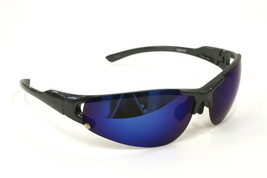
Huntsville has beautiful springs and summers, so naturally you want to kick back on your patio and relish the warm weather. However, heading outside without properly shielding your eyes from the sun’s ultraviolet (UV) rays can increase your risk of cataracts and glaucoma. If you already suffer with these conditions, too much UV light will only exacerbate them. Next time you’re in the backyard soaking up the sun, grab a pair of sunglasses to protect those peepers.
What Type of Sunglasses Work Best?
The Environmental Protection Agency suggests wearing sunglasses that filter out at least 99 percent of ultraviolet rays. Of course, if you can find a pair that blocks out a 100 percent of the rays, that’s even better.
Some sunglasses are manufactured strictly for fashion purposes and provide very little protection, so don’t be bamboozled by a high price tag. In reality, you could spend $5 on a pair of shades and get better protection than you would from some of the pricier ones. The best way to figure out if sunglasses offer adequate UV protection is to read the manufacturer’s label. If the label reads "99 to 100% UV protection," you’re good to go.
Wraparound sunglasses work best, as they keep UV light from penetrating through the top and sides. In addition, opt for shades that keep 75 to 90 percent of all visible light out. If you try on your sunglasses and you can see your eyes through the lenses, the glasses don’t block out enough visible light.
If you have a patio in your backyard, you certainly deserve to enjoy it. However, while you’re lounging your cares away in the sun, don’t forget to put on a pair sunglasses. This simple piece of eyewear can preserve your vision by reducing your risk of sun-induced cataracts and glaucoma.
If you want a local concrete finisher who is reliable, thorough and always on his game, contact B.J. Stewart Concrete today!
What Type of Sunglasses Work Best?
The Environmental Protection Agency suggests wearing sunglasses that filter out at least 99 percent of ultraviolet rays. Of course, if you can find a pair that blocks out a 100 percent of the rays, that’s even better.
Some sunglasses are manufactured strictly for fashion purposes and provide very little protection, so don’t be bamboozled by a high price tag. In reality, you could spend $5 on a pair of shades and get better protection than you would from some of the pricier ones. The best way to figure out if sunglasses offer adequate UV protection is to read the manufacturer’s label. If the label reads "99 to 100% UV protection," you’re good to go.
Wraparound sunglasses work best, as they keep UV light from penetrating through the top and sides. In addition, opt for shades that keep 75 to 90 percent of all visible light out. If you try on your sunglasses and you can see your eyes through the lenses, the glasses don’t block out enough visible light.
If you have a patio in your backyard, you certainly deserve to enjoy it. However, while you’re lounging your cares away in the sun, don’t forget to put on a pair sunglasses. This simple piece of eyewear can preserve your vision by reducing your risk of sun-induced cataracts and glaucoma.
If you want a local concrete finisher who is reliable, thorough and always on his game, contact B.J. Stewart Concrete today!
 RSS Feed
RSS Feed
